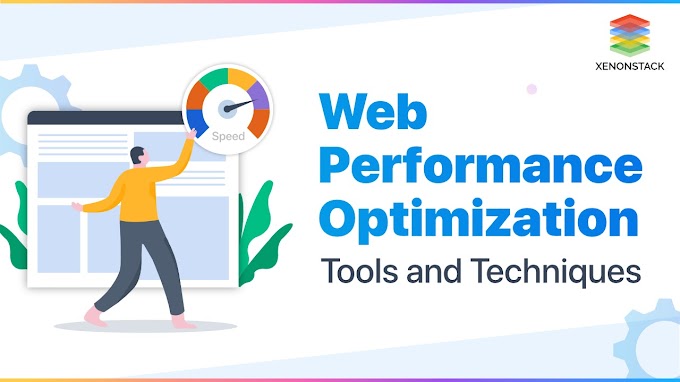In the digital age, where speed is everything, web performance optimization has become a critical aspect of web development. Users expect websites to load quickly and efficiently, and even a slight delay can lead to higher bounce rates and lost opportunities. Optimizing web performance not only enhances user experience but also improves search engine rankings, leading to better visibility and success for businesses.
This blog will delve into the importance of web performance optimization, explore the tools available for analyzing and improving performance, and outline key techniques to ensure your website runs at its best.
Why Web Performance Optimization Matters
Web performance optimization (WPO) is the process of making a website faster, more responsive, and more efficient. The importance of WPO cannot be overstated, as it directly impacts user experience, conversion rates, and SEO (Search Engine Optimization).
User Experience: Studies have shown that users expect a website to load within two to three seconds. If a site takes longer, users are likely to abandon it, leading to higher bounce rates. A fast-loading website keeps users engaged and encourages them to explore further.
Conversion Rates: The speed of a website has a direct impact on conversion rates. Amazon, for example, found that every 100 milliseconds of latency cost them 1% in sales. Faster websites create a smoother user journey, leading to higher conversion rates.
SEO: Search engines like Google factor in page speed when ranking websites. A well-optimized website is more likely to rank higher in search results, driving more organic traffic.
Tools for Web Performance Optimization
Before diving into optimization techniques, it's essential to analyze the current performance of your website. Various tools can help you identify bottlenecks and areas that need improvement.
- Google PageSpeed Insights
Google PageSpeed Insights is a widely-used tool that provides detailed insights into your website’s performance. It analyzes both desktop and mobile versions of your site, offering a score based on various metrics such as First Contentful Paint (FCP) and Largest Contentful Paint (LCP). The tool also provides actionable suggestions to improve your site’s performance.
- GTmetrix
GTmetrix is another popular tool that offers in-depth performance analysis. It provides a detailed report on your website’s load time, page size, and the number of requests made. GTmetrix also gives recommendations on how to optimize your site, such as minimizing redirects, leveraging browser caching, and optimizing images.
- WebPageTest
WebPageTest is a comprehensive tool that allows you to test your website’s performance from different locations around the world. It offers advanced testing features like multi-step transactions, video capture, and content blocking. The tool provides a waterfall view of the loading process, helping you pinpoint specific areas that need optimization.
- Lighthouse
Lighthouse is an open-source, automated tool developed by Google for improving the quality of web pages. It provides performance audits, accessibility checks, SEO insights, and more. Lighthouse can be run through Chrome DevTools, from the command line, or as a Node module, making it versatile and accessible.
- Chrome DevTools
Chrome DevTools is an essential tool for any web developer. It offers a suite of features to analyze and debug websites, including performance monitoring. The Performance panel allows you to record and analyze the runtime of your site, showing how long it takes for different elements to load and where potential bottlenecks lie.
Key Techniques for Web Performance Optimization
Once you've analyzed your website's performance, it's time to implement optimization techniques. Here are some key strategies to improve your site's speed and efficiency:
- Optimize Images
Images often account for a significant portion of a webpage’s load time. Optimizing images can drastically reduce load times and improve performance.
Compression: Use tools like TinyPNG or ImageOptim to compress images without losing quality. This reduces file size, leading to faster loading times.
Responsive Images: Implement responsive images using the
srcsetattribute to serve different image sizes based on the user’s device. This ensures that mobile users aren’t downloading unnecessarily large images.Lazy Loading: Implement lazy loading to defer the loading of off-screen images until the user scrolls down the page. This reduces initial load times and saves bandwidth.
- Minify CSS, JavaScript, and HTML
Minification is the process of removing unnecessary characters from code, such as spaces, comments, and line breaks. Minifying CSS, JavaScript, and HTML files reduces file size, leading to faster load times.
CSS and JavaScript: Use tools like CSSNano and UglifyJS to minify your stylesheets and scripts.
HTML: Tools like HTMLMinifier can be used to minify HTML files.
- Leverage Browser Caching
Browser caching stores static files (e.g., images, CSS, JavaScript) on the user's device, so they don’t need to be downloaded again on subsequent visits. Leveraging browser caching can significantly reduce load times for returning visitors.
- Set Expiration Headers: Configure your server to set expiration headers for static resources. This tells the browser how long it should cache the resources, reducing the need for re-fetching them on future visits.
- Use a Content Delivery Network (CDN)
A Content Delivery Network (CDN) distributes your website’s static files across multiple servers located around the world. When a user accesses your website, the files are served from the nearest server, reducing latency and load times.
- Benefits: CDNs improve performance, reduce server load, and increase redundancy. Popular CDN providers include Cloudflare, Akamai, and Amazon CloudFront.
- Reduce HTTP Requests
Each element on a webpage, including images, scripts, and stylesheets, requires an HTTP request. Reducing the number of HTTP requests can significantly improve load times.
Combine Files: Combine multiple CSS and JavaScript files into a single file to reduce the number of HTTP requests.
Use CSS Sprites: Combine multiple images into a single sprite and use CSS to display the appropriate image section. This reduces the number of image requests.
- Optimize Critical Rendering Path
The critical rendering path refers to the sequence of steps the browser takes to render a webpage. Optimizing this path can reduce the time it takes for the content to appear on the screen.
Prioritize Above-the-Fold Content: Ensure that above-the-fold content (content visible without scrolling) loads quickly by prioritizing its resources. Inline critical CSS and defer non-critical JavaScript to improve initial load times.
Async and Defer JavaScript: Use the
asyncanddeferattributes to load JavaScript files asynchronously, preventing them from blocking the rendering of the page.
- Enable Compression
Compression reduces the size of your website’s files before they are sent to the browser, leading to faster load times.
- Gzip Compression: Enable Gzip compression on your server to reduce the size of HTML, CSS, and JavaScript files. Most modern browsers support Gzip, making it a standard technique for improving performance.
- Monitor Performance Continuously
Web performance optimization is not a one-time task. It requires continuous monitoring and improvement as your website evolves.
Regular Audits: Perform regular performance audits using tools like Google PageSpeed Insights or Lighthouse to identify areas for improvement.
Real-User Monitoring: Implement real-user monitoring (RUM) to track the performance of your website as experienced by actual users. This provides valuable insights into how different factors, such as network conditions and device types, affect performance.
Conclusion
Web performance optimization is a crucial aspect of web development that directly impacts user experience, conversion rates, and SEO. By leveraging the right tools and implementing key optimization techniques, you can ensure that your website delivers a fast, efficient, and seamless experience to all users.
Remember, optimizing web performance is an ongoing process. Regularly analyze your site’s performance, stay updated with the latest best practices, and continually refine your strategies to keep your website running at its best.





0 Comments